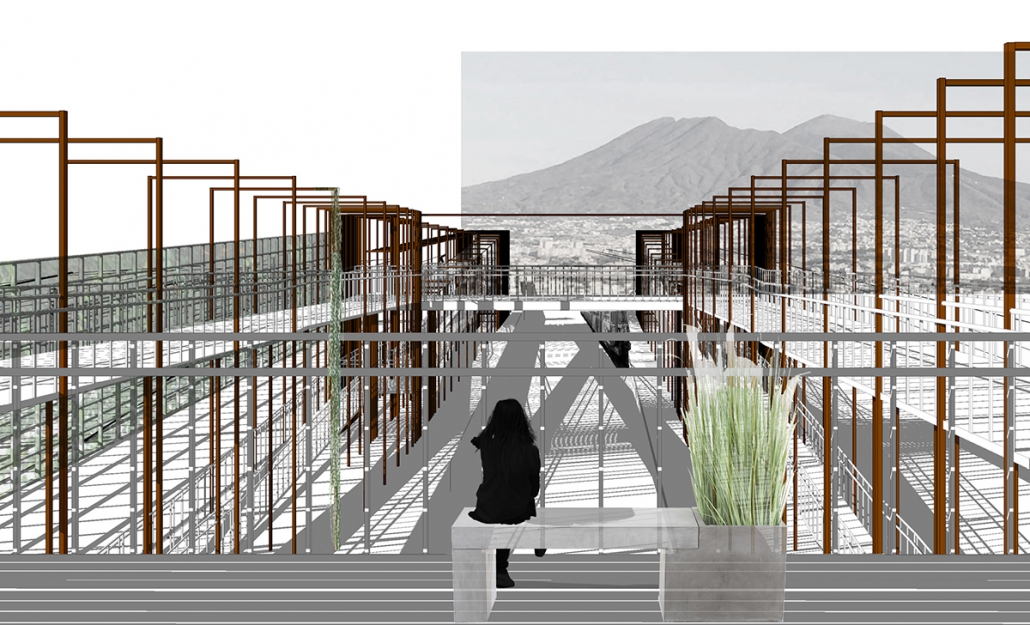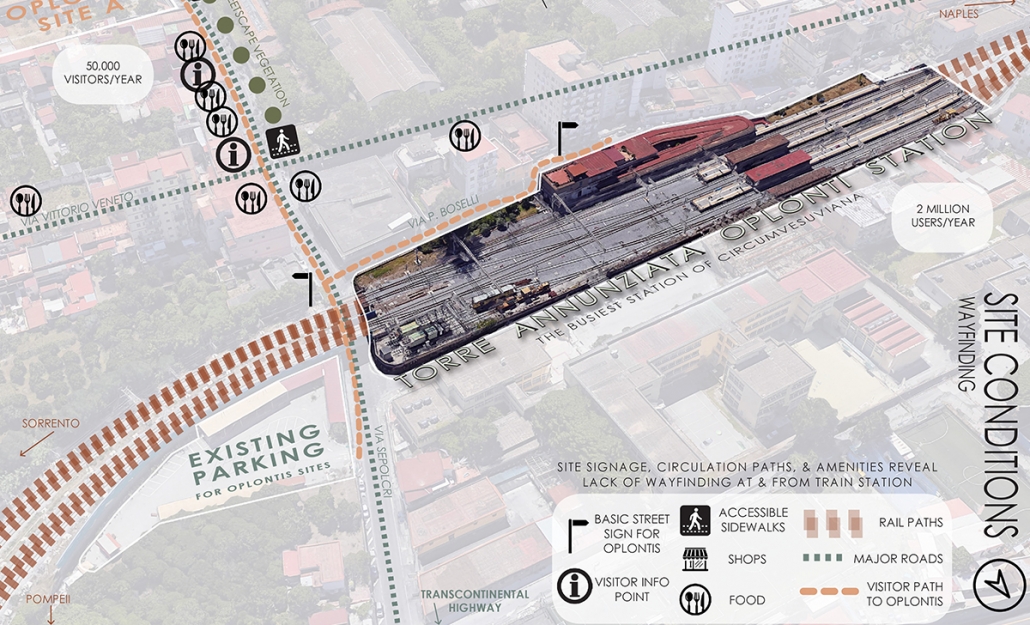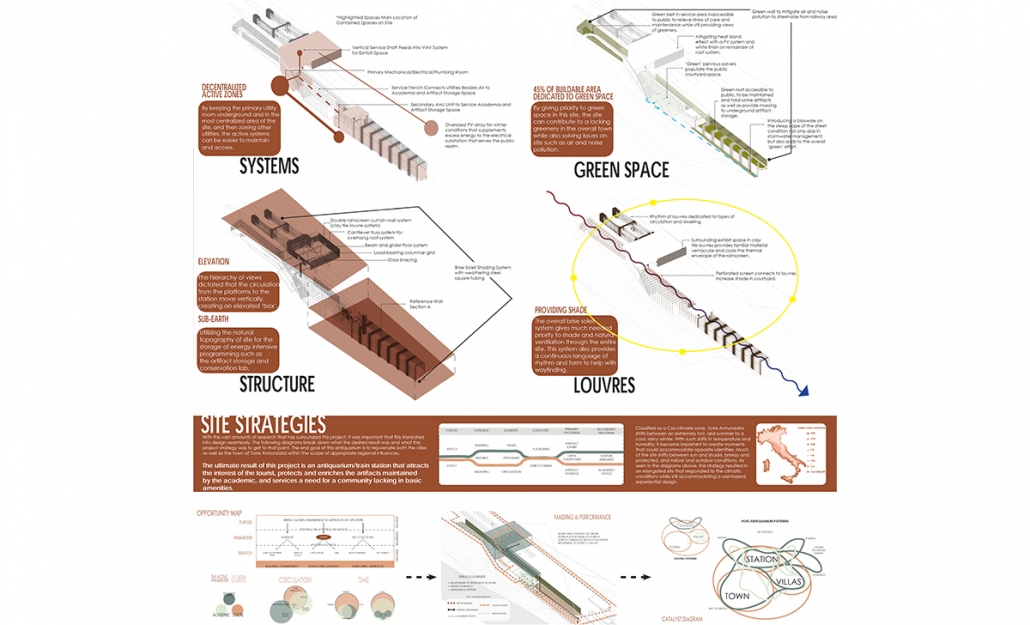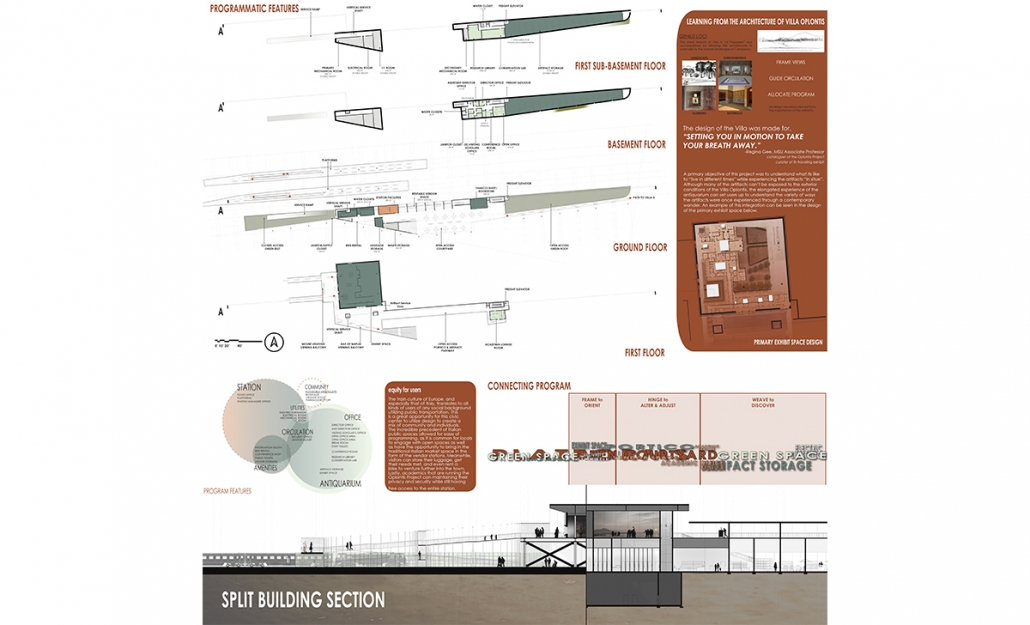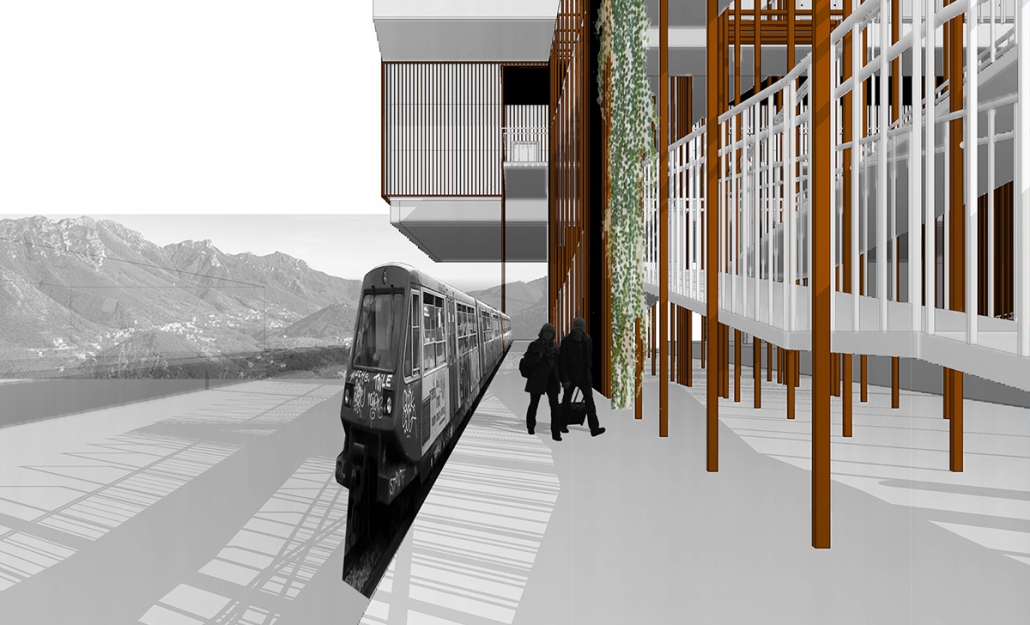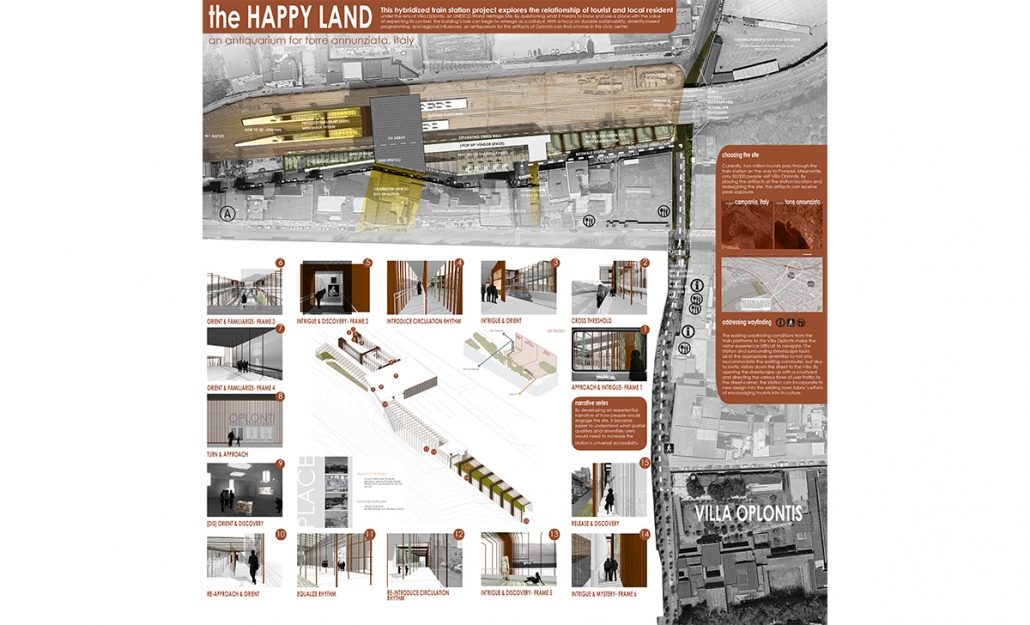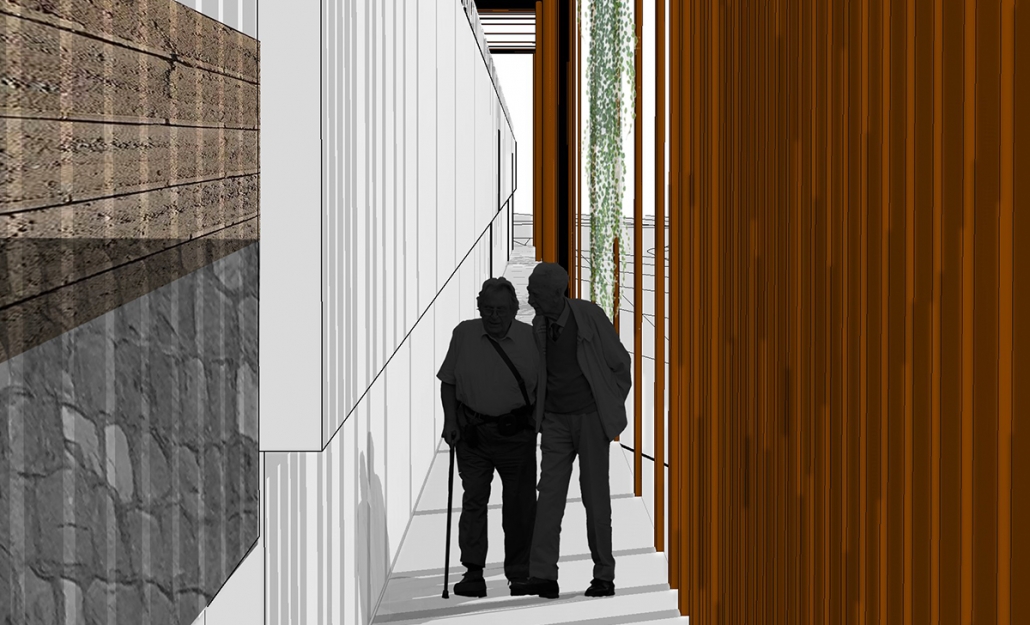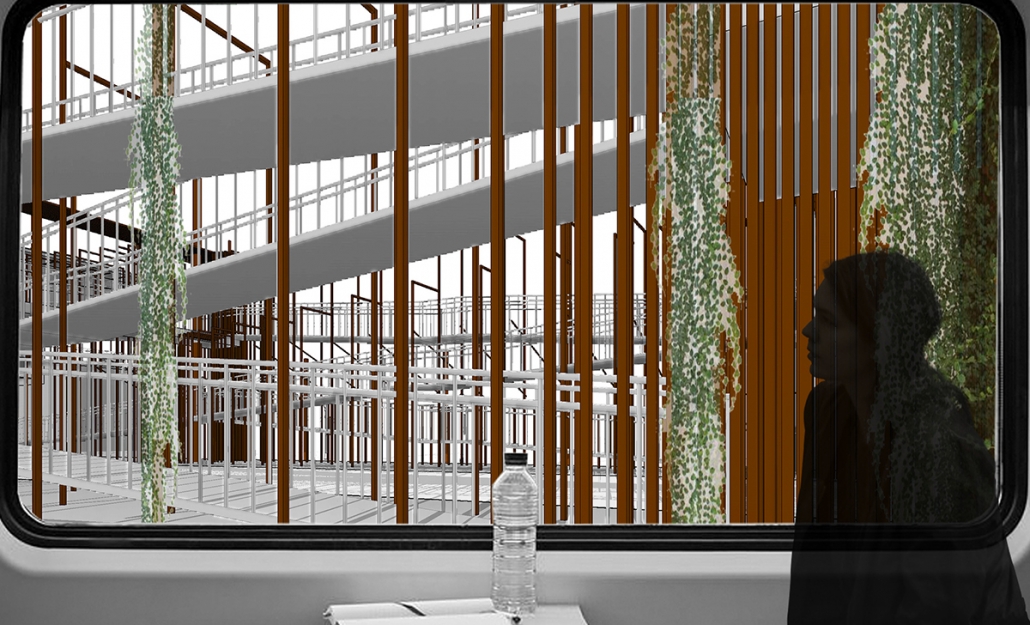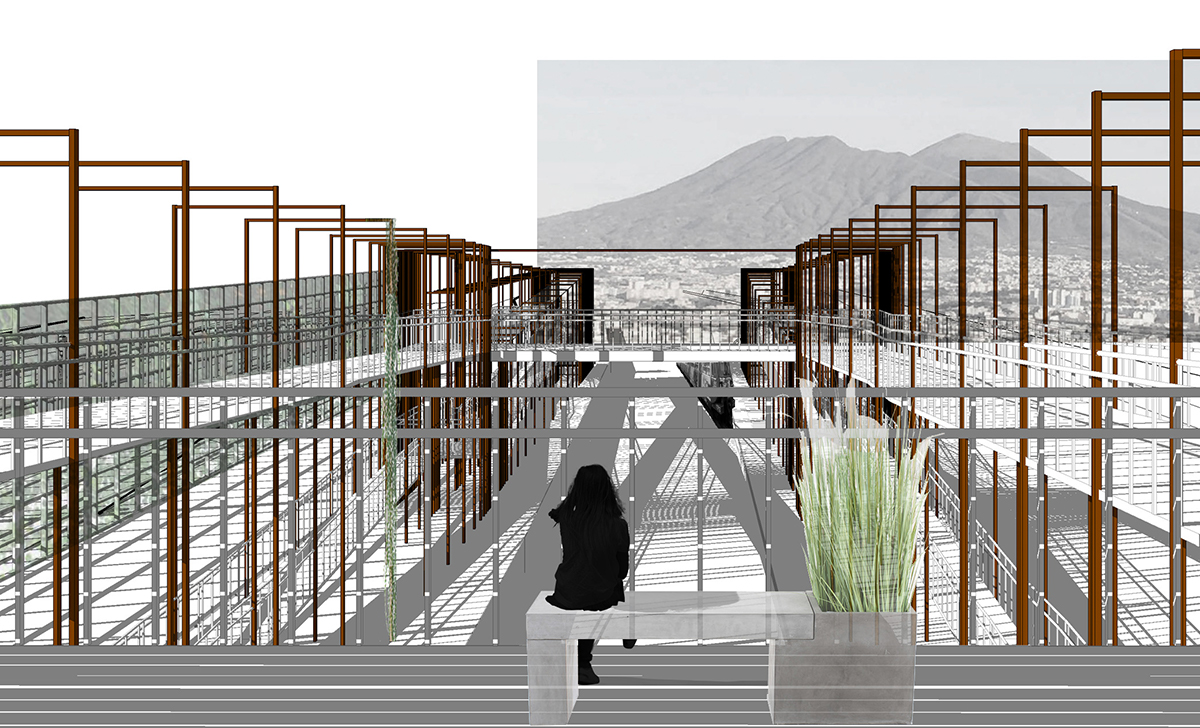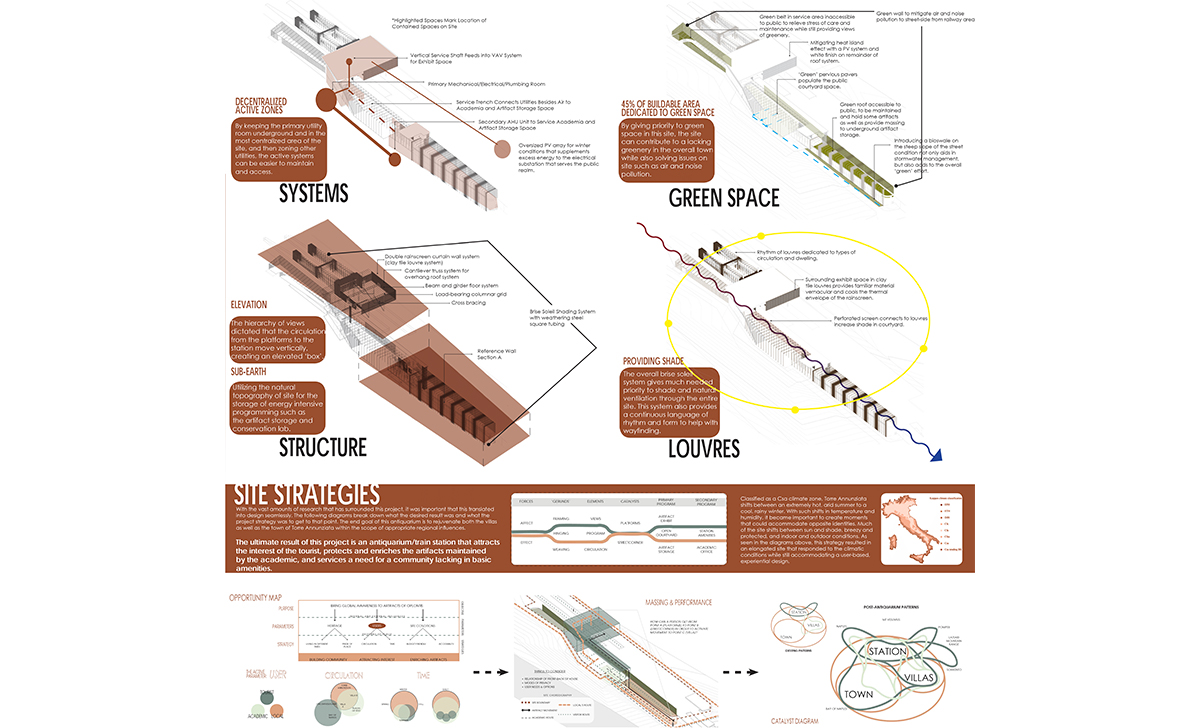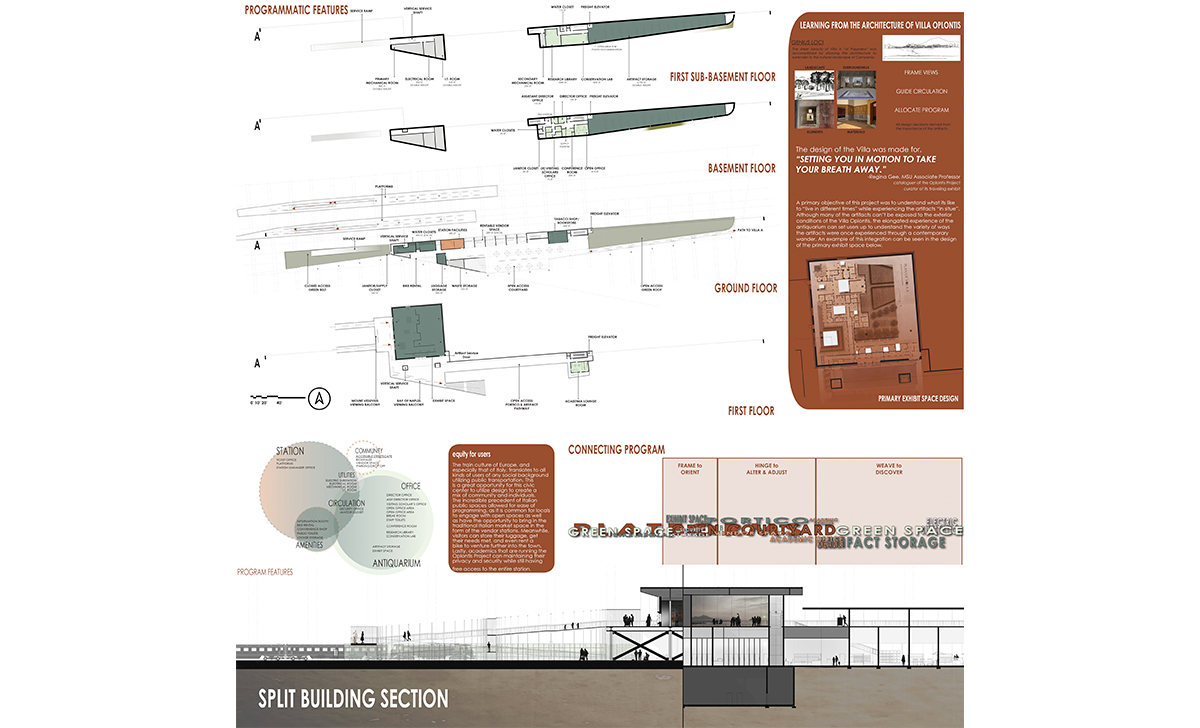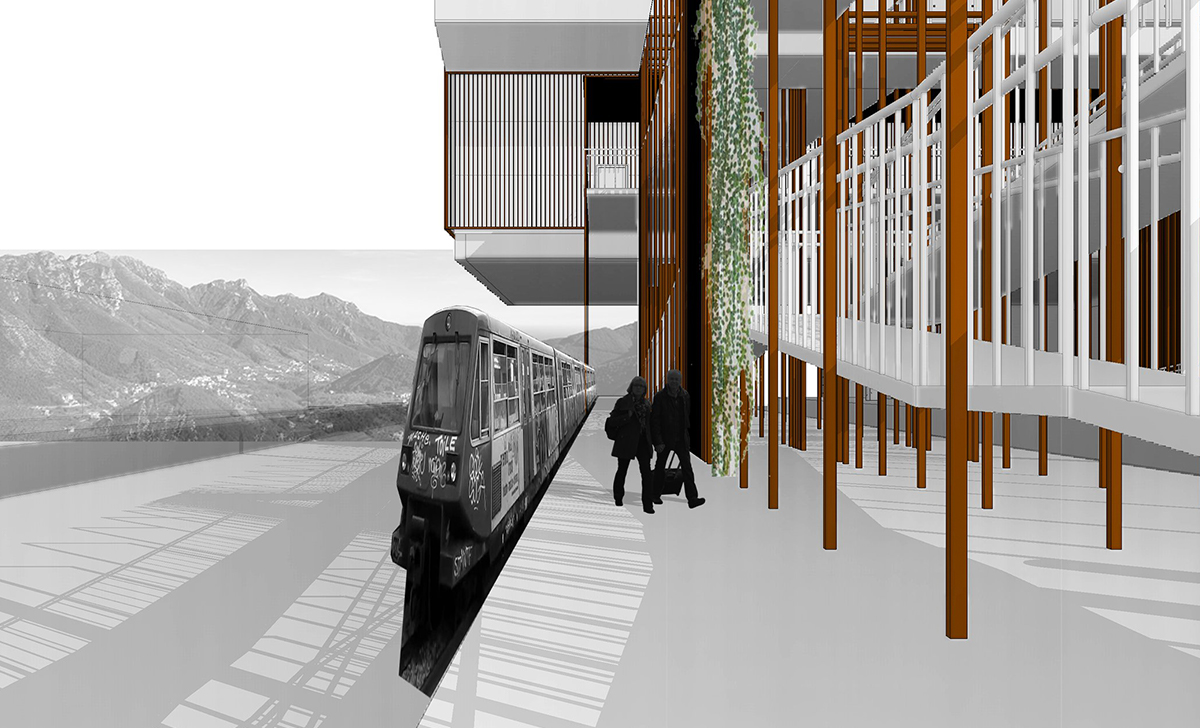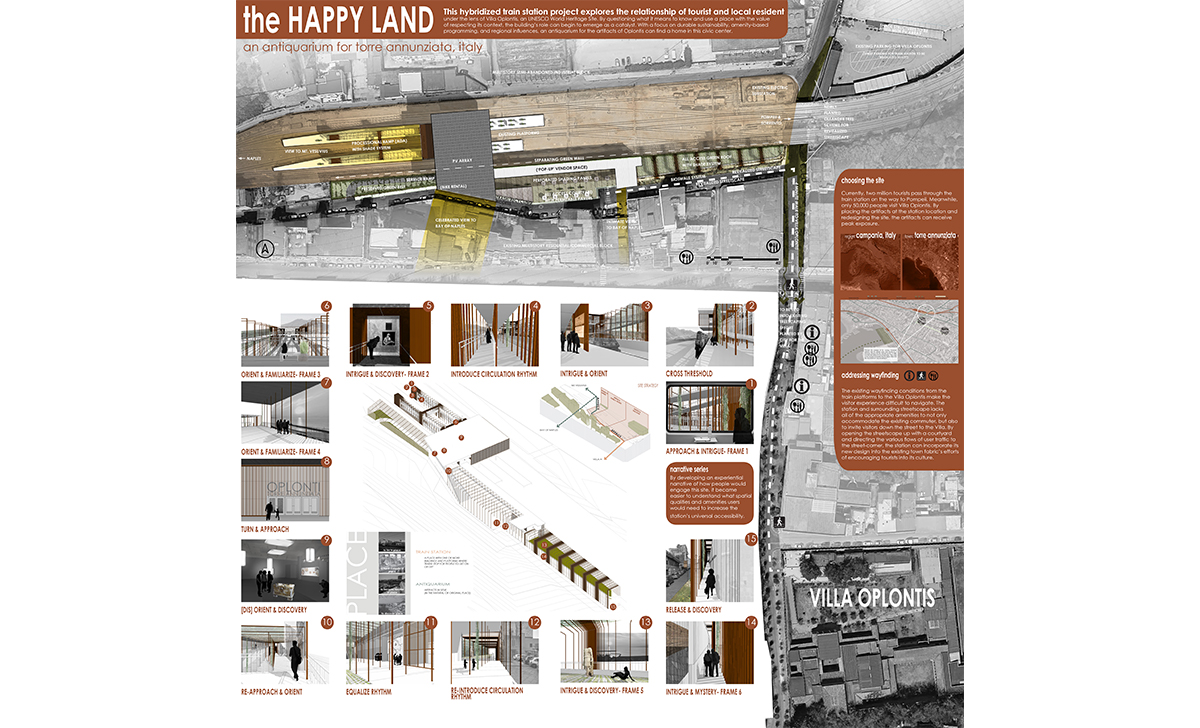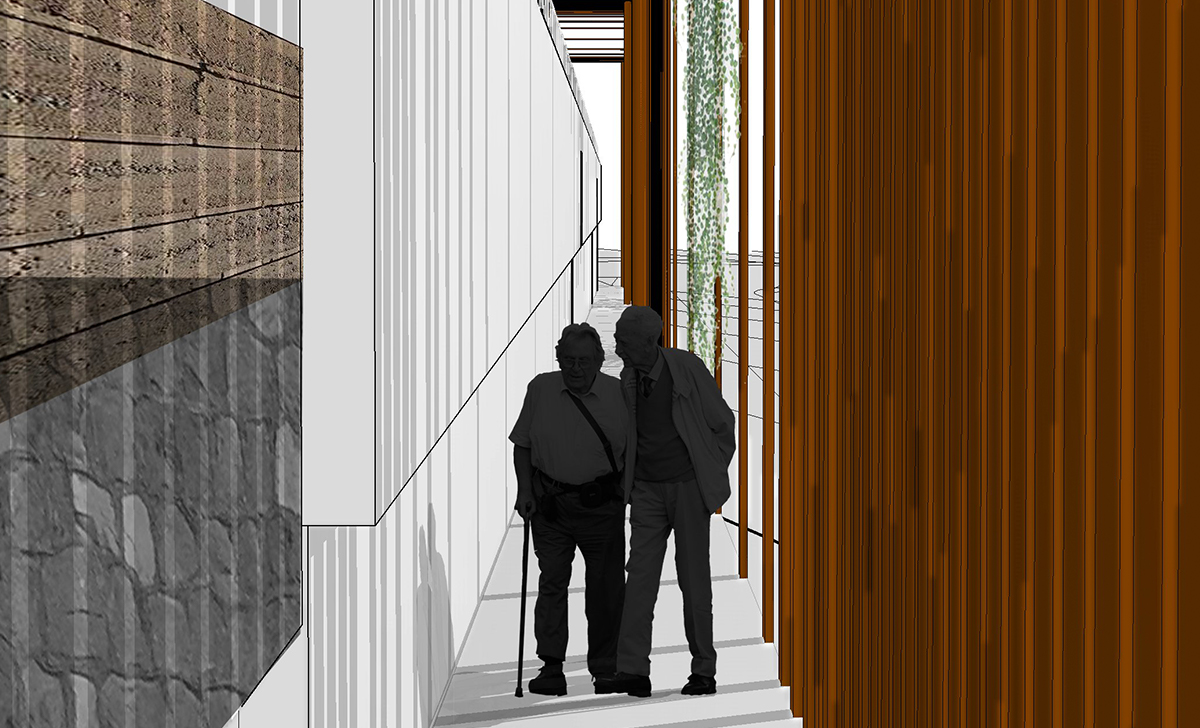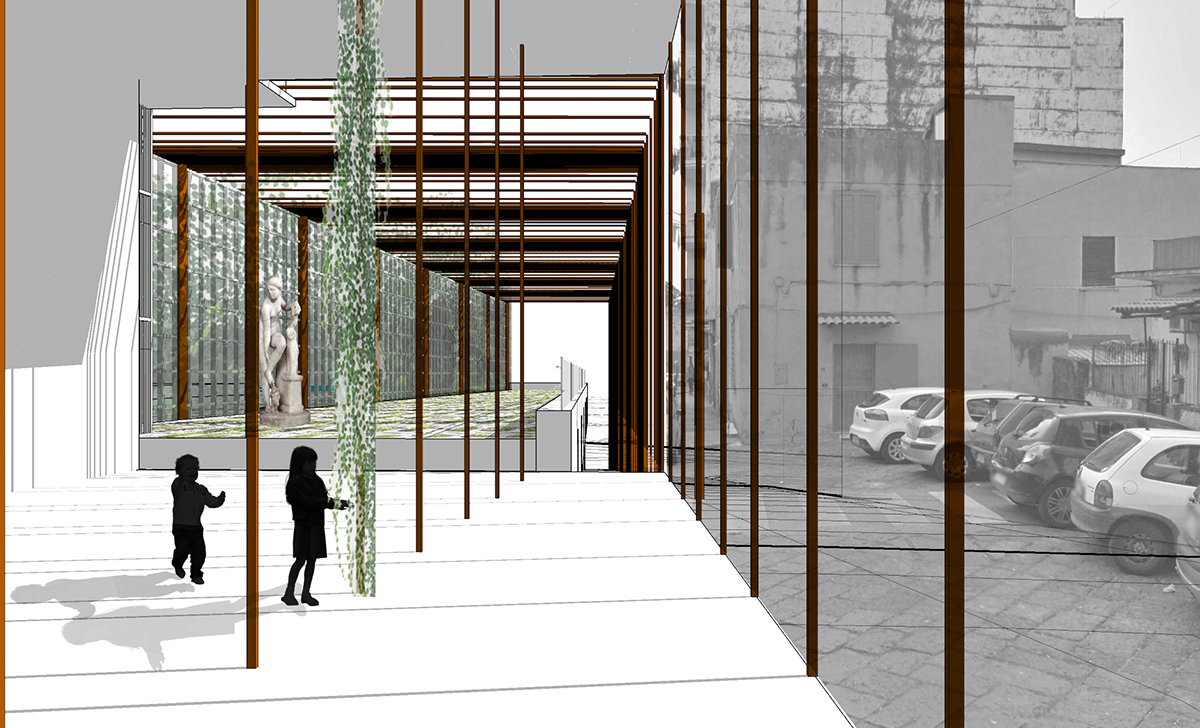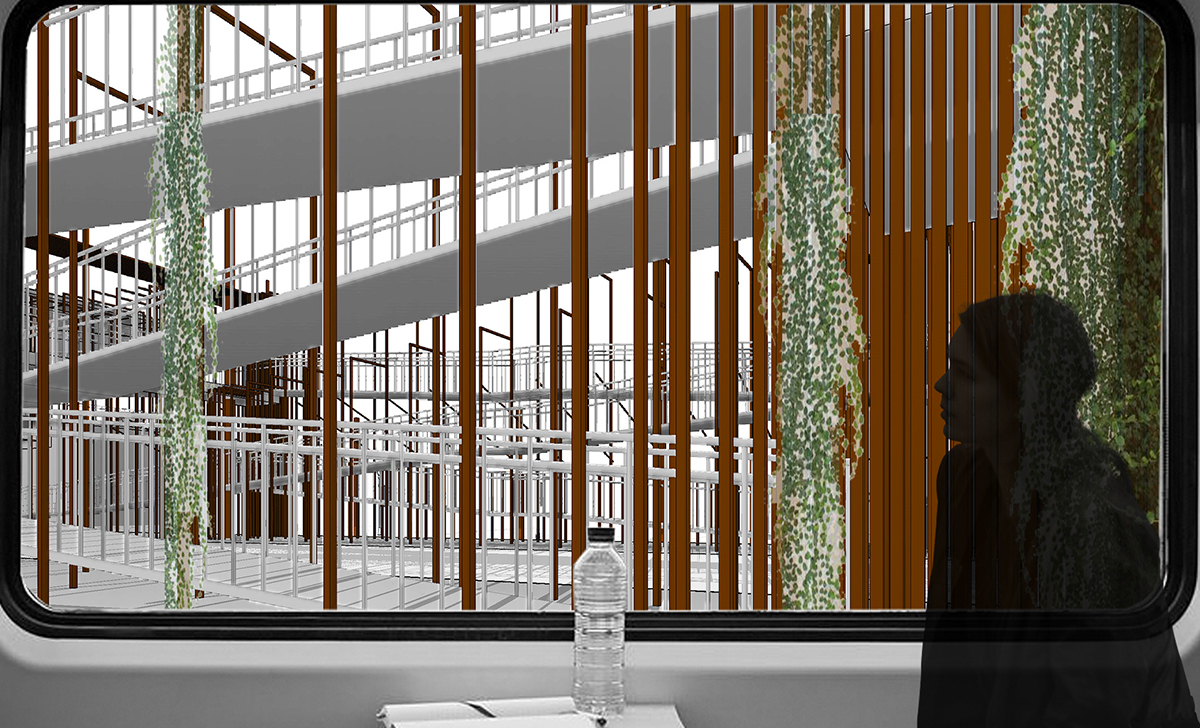2018-2019 COTE Top Ten Winners
Winner: “The Happy Land”
An Antiquarium for Torre Annunziata
Haley Teske
Juror Comments
Happy Land is a compelling urban design proposal that brings a different approach to viewing sustainable living within an existing, and historic, urban fabric. The design promotes public access to cultural heritage and fragile sites, while also acknowledging a dense streetscape and urban scale. Through its research of local economy and the impact of resourcing, the embedded ideas successfully demonstrate new methods of incorporating sustainable strategies in atypical project locations.
Project Description
The tourist industry of Campania, Italy has controversially become both the life and death of this region’s livelihood. A specific town in this region, Torre Annunziata, currently possesses untapped, economic potential in the form of the artifacts of the Villa Oplontis that were preserved in the infamous Mt. Vesuvius eruption of AD 79 [now an UNESCO World Heritage Site]. Although many involved parties of the Oplontis Project would like to see these hidden-away artifacts be brought to the public’s eye in the form of a new building, the question of the tourist impact on the town has become too severe to ignore.
In comparison to its sister sites [Herculaneum & Pompeii], Villa Oplontis is receiving a small fraction of the visitor population. While Pompeii deteriorates under the footsteps of two million visitors per year, the economically-struggling town of Torre Annunziata cannot maintain its archaeological site without said tourist economy. Although the act of simply bringing the artifacts into the public eye within Villa Oplontis has the possibility of attracting more people, there is no guarantee that this reward will outweigh the risk of deteriorating Villa Oplontis and also possibly depleting the rich culture of the town.
The overall visitor population to Pompeii passes through Torre Annunziata at Circumvesuviana, the local, dilapidated train station that services the tourist industry as well as the local commuter population. A mere four-minute walk from Villa Oplontis, this station also has untapped potential for drawing visitors into the culture of Torre Annunziata and the Oplontis Project. By bringing the artifacts to the station itself, the likelihood of the artifacts receiving peak exposure can increase up to 4000%. Under the influence of a triple bottom line sustainability strategy [people, planet, profit], the result of this hybrid design generates a unique but relatable experience of another time in today’s world.
The programmatic features of this Antiquarium-Train Station hybrid were organized into categories of both the public and private sectors in regards to necessities for each function, with an emphasis on public amenities, streetscaping, and safety of the artifacts. The climate zone, Mediterranean Csa [Koppen Climate Classification], played a heavy role in the organization of the site with ample green space and an overarching shading structure. The total built square footage is 52,000 ft2.

 Study Architecture
Study Architecture  ProPEL
ProPEL 